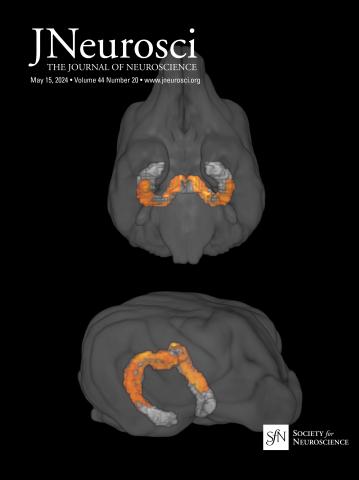Directed Neural Network Dynamics in Sensorimotor Integration: Divergent Roles of Frontal Theta Band Activity Depending on Age.
IF 4
2区 医学
Q1 NEUROSCIENCES
引用次数: 0
Abstract
Sensorimotor integration processes are crucial for daily-life activities, such as grasping objects or driving a car. Theta band activity (TBA) in distributed brain networks is likely essential to perform sensorimotor integration successfully. Directed communication in these brain networks is shaped by brain maturation during adolescence. This study investigates how age-related effects attributable to brain maturation influence directed communication in a theta-associated sensorimotor integration network. We conducted an EEG study with a continuous pursuit-tracking task performed by an adult group (n = 41) and an adolescent group (n = 30), each including both sexes. Both groups show elevated theta-band activity during higher sensorimotor demands. Yet, the adult group outperformed the adolescent group, particularly during higher demands. Further analyses revealed that this is likely due to enhanced directed connectivity between frontal areas and the ventral processing stream in adults, which likely enables effective integration of visual and motor information. Adolescents rely on frontal TBA signaling surprise and prediction error, with no input from ventral stream areas. This might cause lower performance during higher demands. Across age, TBA appears to serve distinct functions during sensorimotor integration. Age-related processes transform the neural processes underlying complex sensorimotor integration.Significance Statement This study shows how brain development affects tasks like grasping or driving, where vision and movement must work together. The results suggest that adults who performed better in sensorimotor integration yield a stronger information transfer between brain regions that integrate visual and motor information, while adolescents lack an input from such areas. This difference in brain communication could explain why adolescents struggle with more complex tasks, highlighting how brain maturation improves sensorimotor integration.感觉运动整合中的定向神经网络动力学:额叶θ波活动在不同年龄中的不同作用。
感觉运动整合过程对于日常生活活动至关重要,例如抓取物体或驾驶汽车。分布式脑网络中的θ波带活动(TBA)可能是成功完成感觉运动整合的必要条件。这些大脑网络中的定向交流是由青春期大脑成熟形成的。本研究探讨了脑成熟的年龄相关效应如何影响与theta相关的感觉运动整合网络中的定向交流。我们对成人组(n = 41)和青少年组(n = 30)进行了一项连续追踪任务的脑电图研究,每组包括男女。在高感觉运动需求时,两组都表现出高的theta-band活动。然而,成人组的表现优于青少年组,特别是在更高的要求下。进一步的分析表明,这可能是由于成年人额叶区域和腹侧处理流之间的定向连接增强,这可能使视觉和运动信息有效整合。青少年依靠额叶TBA信号惊讶和预测错误,没有来自腹侧脑流区域的输入。这可能会导致在高需求时性能下降。在不同年龄,TBA似乎在感觉运动整合中起着不同的作用。与年龄相关的过程改变了复杂感觉运动整合的神经过程。这项研究显示了大脑发育如何影响诸如抓握或驾驶等任务,在这些任务中,视觉和运动必须协同工作。结果表明,在感觉运动整合方面表现较好的成年人在整合视觉和运动信息的大脑区域之间产生了更强的信息传递,而青少年则缺乏来自这些区域的输入。大脑沟通的这种差异可以解释为什么青少年在更复杂的任务中挣扎,强调大脑成熟如何改善感觉运动整合。
本文章由计算机程序翻译,如有差异,请以英文原文为准。
求助全文
约1分钟内获得全文
求助全文
来源期刊

Journal of Neuroscience
医学-神经科学
CiteScore
9.30
自引率
3.80%
发文量
1164
审稿时长
12 months
期刊介绍:
JNeurosci (ISSN 0270-6474) is an official journal of the Society for Neuroscience. It is published weekly by the Society, fifty weeks a year, one volume a year. JNeurosci publishes papers on a broad range of topics of general interest to those working on the nervous system. Authors now have an Open Choice option for their published articles
 求助内容:
求助内容: 应助结果提醒方式:
应助结果提醒方式:


